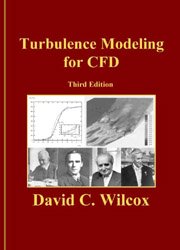Turbulence modeling for CFD pdf free
Par perkins david le jeudi, juin 23 2016, 00:46 - Lien permanent
Turbulence modeling for CFD by David C. Wilcox


Turbulence modeling for CFD David C. Wilcox ebook
Format: pdf
ISBN: 0963605100, 9780963605108
Publisher: DCW Industries
Page: 477
Turbulence Part 3 – Selection of wall functions and Y+ to best capture the Turbulent Boundary. Chapter 24 - Intro to Turbulence Modeling in CFD. As is appropriate for single phase CFD, most of the emphasis is on selection of turbulence models. Advanced CFD and Turbulence Modelling for Mixing Problems (PhD Position) Closing Date: 31 March 2011. Chapter 5 discusses selection of physical models available as user options. Today we will consider three critical questions that are often asked by CFD engineers when developing or refining a CFD simulation:. It just so happens that one of the areas that RANS CFD could use help with is improving turbulence models for better prediction of - you guessed it - boundary layers. In recent posts in our series of Turbulence Modelling posts, we have covered boundary layer theory and touched on some useful meshing and post- processing guidelines to check you are appropriately resolving the boundary layer profile. It provides the capability to use different physical models such as incompressible or compressible, inviscid or viscous, laminar or turbulent, steady- state or transient analyses. It has a dedicated chapter for the turbulence modelling which amazed me as well. Gas is introduced at the bottom of column which causes turbulent stream and thus provide required stirring action for reactive gas exchange. His research interest include turbulence modeling, geophysical fluid dynamics and unsteady separated flows. Additionally we included the first turbulence models and a steady-state solver that enable the setup of more sophisticated CFD simulations. Current industrial and aeronautics CFD simulations are largely based on linear eddyviscosity turbulence models (LEVM).